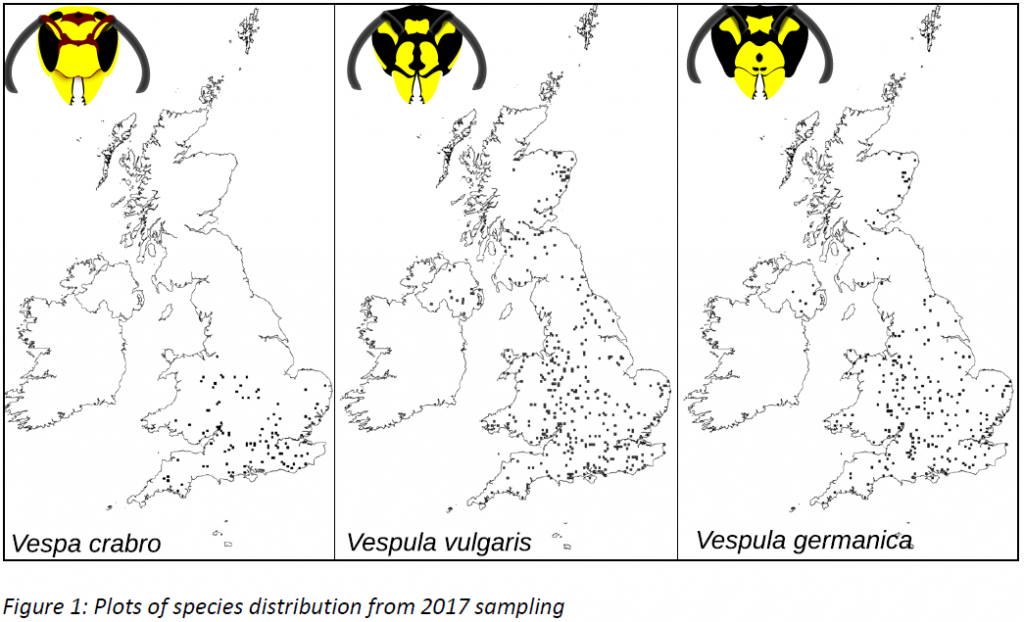Big Wasp Survey Generates High Quality Data on Wasp Distributions
Thanks to everyone’s help, and to some serious wasp sorting over the winter, we were able to publish the first BWS scientific paper in the journal Insect Conservation and Diversity. The main findings are summarised below (apologies – we couldn’t afford the open access fees for the journal).
The 2017 survey ran from 26th August to 10th Sept; 2377 people registered to take part, and 54.4% (1294) of these people submitted their results. Of these, 551 traps (42.5%) contained wasps, representing 548 postcodes across the UK; 6680 wasps could be identified to species level; a further 180 wasps from 39 traps were too damaged to identify.
Three species dominated: the common yellowjacket wasp Vespula vulgaris accounted for 44% of wasps (2942 wasps in 407 traps); the German yellowjacket wasp Vespula germanica accounted for a further 44%. (2974 wasps in 251 traps); and the European hornet Vespa crabro accounted for 6% of the sample (395 wasps in 100 traps) (see Fig 1). We also detected small number of Vespula rufa (2 in 2 traps) and Dolichovespula media (9 wasps in 6 traps).

By comparing with a long-term dataset of the same species collected by members of the Bees, Wasps and Ants Recording Scheme (BWARS), we were able to show that the quality of the data being generated by the Big Wasp Survey is excellent. It is less spatially biased than BWARS data
(meaning that Big Wasp Survey is sampling wasps more evenly across the UK), and the species distribution maps obtained from just two weeks Big Wasp Survey sampling generated similar maps to the long-term dataset, suggesting that our data make biological sense.
